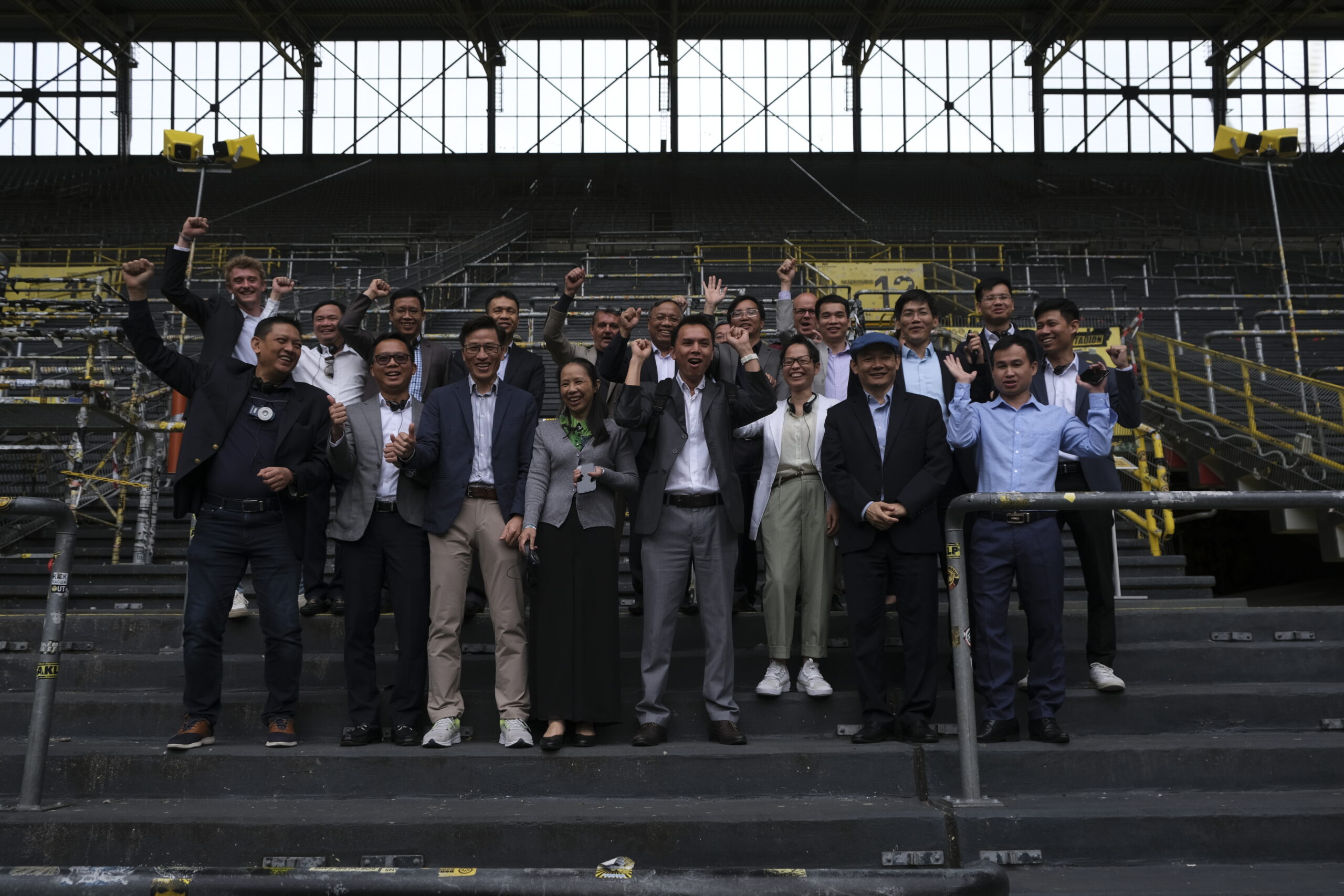Experiencing electrolysers up close, seeing pump systems and pipelines in operation, discussing technical details and political cooperation – this is what a week’s study trip on green hydrogen and Power-to-X (PtX) looked like for the Vietnamese delegation at the end of June. Delegates from the Vietnamese Ministry of Industry and Trade (MoIT), and participants from various institutions such as PetroVietnam, Institute of Energy and private sector companies, travelled Western Germany and Brussels to exchange with research institutions and technology providers as well as the European Commission.
Power-to-Chemicals: Insights into green ammonia production and infrastructure
The study tour kicked off with a visit of Covestro, a manufacturer of polymer materials. Participants got an overview of the production processes and discussed the switch from grey to green ammonia. Covestro sees ammonia as an crucial aspect to reduce the indirect emissions along its value chains and reach its climate targets.
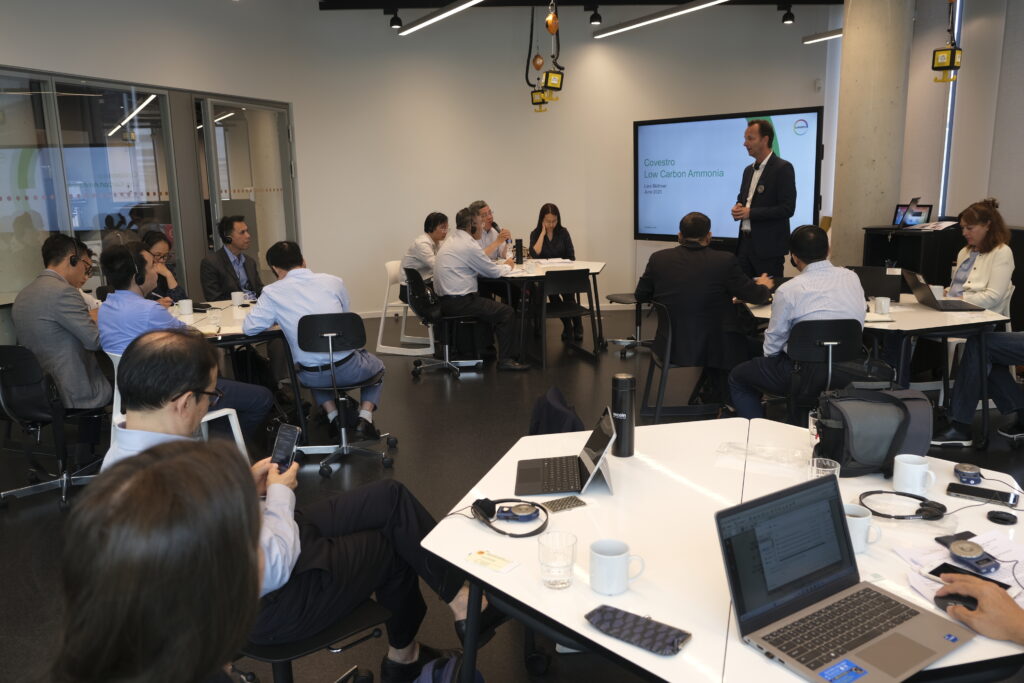
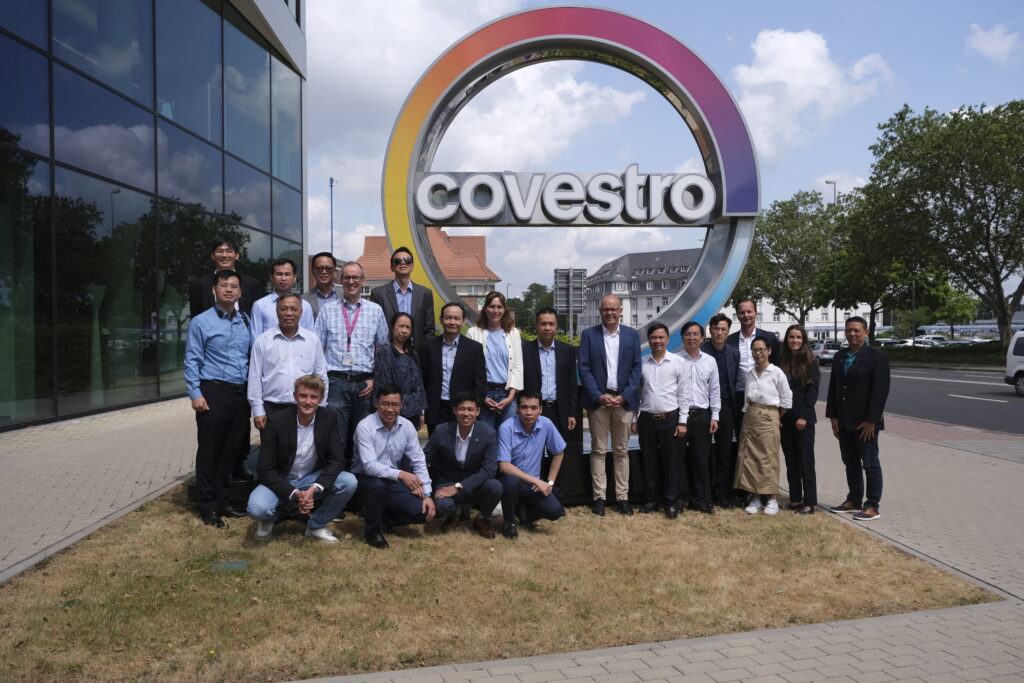
Next, the delegation toured the Currenta Chempark in Leverkusen, one of the largest chemical sites in Europe. Discussions focused on how the 70 local companies cooperate in the production network and benefit from the existing infrastructure. One example of synergies at the Chempark is the sustainable disposal of residual materials from production processes in the on-site waste incineration plant. The energy released in this process is used again for manufacturing.
Diving into the technical specifics of transport and storage
The following two days, the delegation visited Evonik Industries and its pipeline division, the research institute Fraunhofer Umsicht and pump supplier WILO.
Evonik is involved in Germany’s first publicly accessible hydrogen network, which will supply industrial companies in the federal states of Lower Saxony and North Rhine-Westphalia with green hydrogen. The visit spotlighted the blending of hydrogen into existing gas pipelines and the challenges of converting from natural gas to hydrogen pipelines. Evonik is working closely with authorities such as TÜV to test materials and verify the suitability of the pipelines’ steel. Since the molecular structure of hydrogen is smaller than that of natural gas, bolted joints in particular need to be checked to avoid the risk of leakage.
Prof. Dr. Ulf-Peter Apfel, Head of Department Electrosynthesis, gave a tour around the hydrogen labs of the Fraunhofer Umsicht Research Institute. After a demonstration of the electrolysers, participants raised questions about the use of natural gas pipeline systems for hydrogen delivery, carbon capture in power plants and energy storage.
On the WILO site in Dortmund, the delegation visited the decentralised H2-Powerplant with a 520 kg hydrogen tank. “Cooling elements are missing deliberately. This allows us to use the waste heat from the electrolysis directly in our production and thus increase the efficiency of the entire system,” explained Gero Boehmer, Director and Technical Advisor at WILO. In the subsequent tour of Borussia Dortmund’s Signal Iduna Park, the delegates saw WILO’s pump technology in action, acting as the main supplier of the soccer stadium’s pump system.
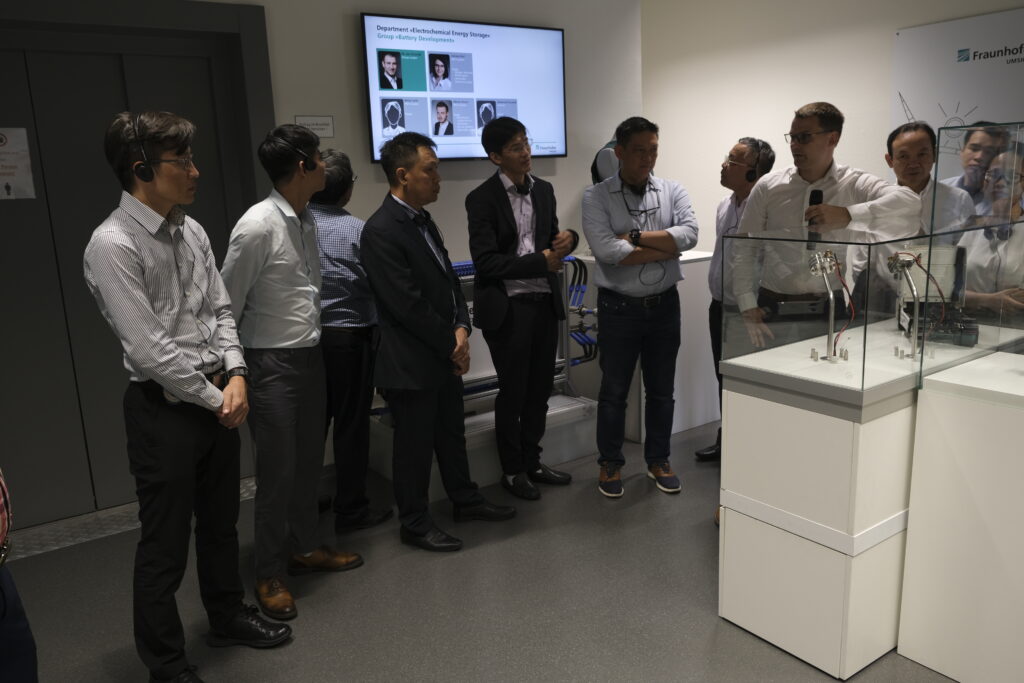
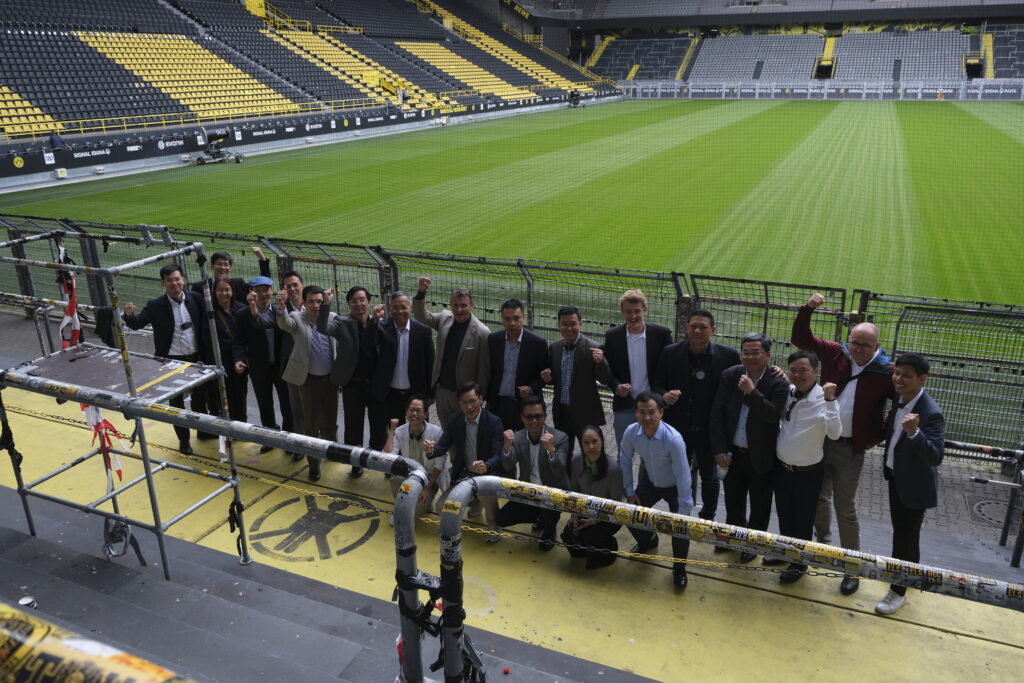
Addressing PtX pathways in Viet Nam
The group concluded with a 2-days stay in Brussel. During a workshop hosted by the International PtX Hub, the delegation discussed the global energy transition and the role of PtX in Viet Nam. Representatives of the MoIT presented current plans for energy development and their relation to the country’s Energy Development Plan.
Points from the discussion were picked up during the meeting with policy officers from different directorates of the European Commission. The Directorate-General Energy (DG-ENER) presented the European Hydrogen Strategy and the European Hydrogen Bank. Until 2024, Viet Nam is to be supported with about 210 million euros for climate-resilience, low-carbon circular economy, decent employment and inclusive entrepreneurships, and the Sustainable Energy Transition Program (SETP).
In an exchange with the German Technical and Scientific Association for Gas and Water (DVGW), DVGW research manager Holger Dörr presented hydrogen admixture and conversion concepts. He explained the conversion from natural gas to hydrogen infrastructure and the legal framework conditions that must be complied with. He described two complementary ways of integrating hydrogen into the gas grid: The flexible integration of 0 to 20 percentage by volume (vol%) hydrogen as admixture to natural gas, and the conversion of natural gas grids into 100% hydrogen grids if hydrogen supply is guaranteed.
Finally, the delegation met with the Association of Municipal Companies (VKU), the umbrella organisation of the municipal supply and waste disposal industry in Germany. Kai Pittelkow, Deputy Head of Office EU Energy and Climate Policy, introduced VKU’s activities to the delegates and dived into the implications of the recently adopted two delegated acts on green hydrogen and PtX of the EU Renewable Energy Directive (RED) II.
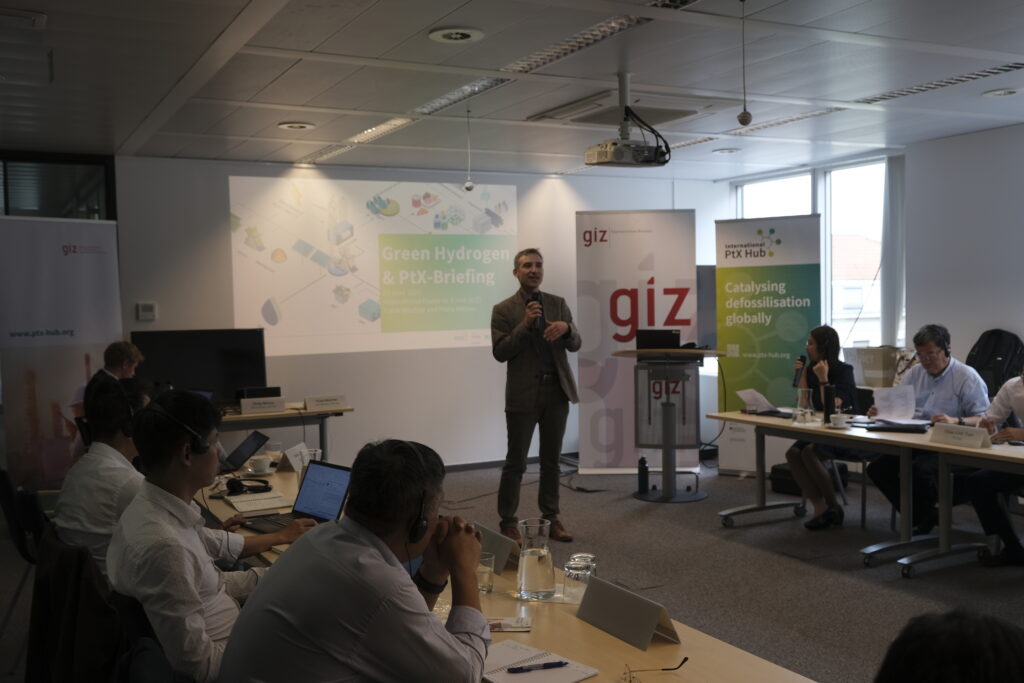
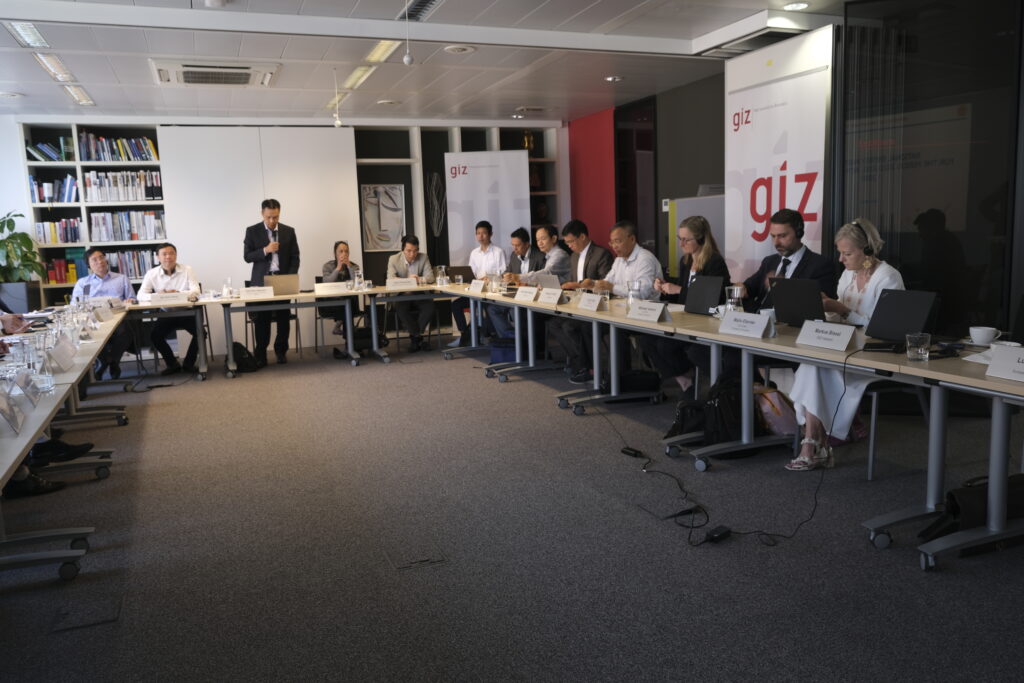
Paving the way for the forthcoming hydrogen strategy
With the Power Development Plan (PDP8) published in May 2023 for the period from 2021 to 2030 with a vision to 2050, Viet Nam is paving the way for a lower carbon future and the basis of a PtX economy. After an intense week of exchange and site visits, the delegation leaves with reinforced ambitions and new insights.
Hydrogen is the missing element to implement a global energy transition and achieve a reduction in climate-damaging emissions. We are ambitious to use hydrogen and hydrogen-based synthetic fuels for use in power generation, transportation, industry, and residential and commercial buildings to accelerate the energy transition and gradually decarbonise our economy.
Hai Anh Dang, Officer at MoIT – Oil, Gas and Coal Department, Viet Nam
Phuong Nguyen Thi Thu contributed to this article.
